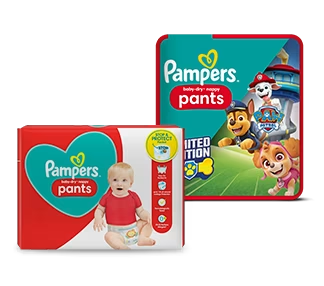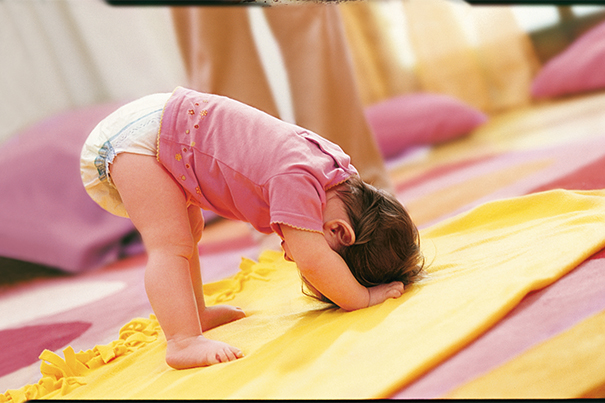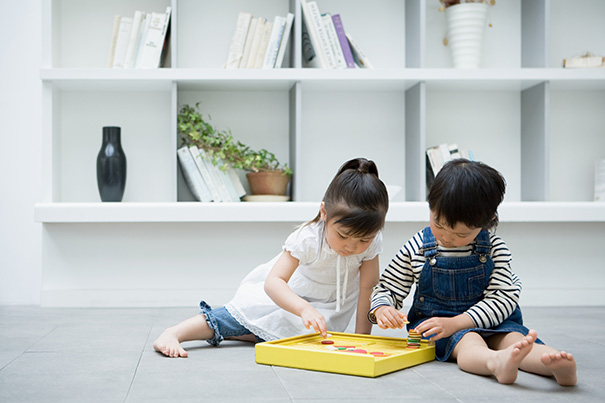
What Is Pretend Play?
As your child grows and matures, you will begin to experience the delight of seeing pretend play in action. Pretend play is integral to your child’s overall development, helping them hone their linguistic, social and emotional skills as well as fostering creativity and encouraging problem-solving. Read more to find out more about pretend play, learn why it’s so important for your child and discover tips for supporting your child in enjoying lots of pretend play.
What Form of Play Is Pretend Play?
Have you ever seen your little explorer lost in an imaginary world? They might be dressed up and zooming around like a fairy or superhero, having a tea party with their teddy bears or digging for treasure in the back garden. All these examples and more are pretend play! There isn't a single definition of pretend play, or a single kind. Some pretend play is built on a world of fantasy and some is all about copying the grown-ups – indeed, you will quickly see your little one imitating real life around them, whether it be making a phone call to an imaginary friend, cooking up a delicious meal for their teddy bears or dressing up to go exploring the world. Little children often tell stories while they play, using words, actions and props to bring their imaginary scenarios to life. Pretend play can also be called imaginative play, creative play, make-believe play and fantasy play. No matter what you call it, pretend play is very important in helping your child make sense of the world around them and it aids their physical and cognitive development. Have you ever heard your little one mimicking adult conversation, seen them carrying out household chores or pretending to go shopping with friends? Pretend play also helps young children learn about social interaction and behaviour. And we all know from our own experience that pretend play is lots of fun as well as being an important part of early childhood development.
When Does Pretend Play Start?
Parents usually start to notice pretend play when their child is between 1 and 2 years old. When children reach the age at which they are likely to pretend play, they will become more aware of the uses of specific objects. You may see your child putting their baby doll to bed, having an imaginary conversation through a toy phone or imitating engine sounds as they play with toy farm machinery. Toddlers will often be engaged in parallel play at this age – but even if they aren’t interacting with one another, you will notice chatting, stories and imaginary games. Your child may even talk about their playmates and make up stories including them.
The Benefits of Pretend Play
Watching your toddler’s pretend play can be a fascinating adventure for you too. As they build their magical world full of incredible ideas, they’re continually learning and developing many important skills. Pretend play and cognitive development go hand in hand, and the following are some of the ways in which your child’s development will benefit from their make-believe games. Pretend play:
5 Ways to Encourage Pretend Play
You can set the stage for your child’s pretend play and all types of development and creative activity with your support and enthusiasm. Here are a few different ways in which you can encourage your little one to enjoy regular imaginative play:
1. Feed the Fantasy
If you see your child absorbed in their own make-believe world, try not to bring them back down to earth too quickly. Ask them questions about their pretend play – who they are and what they are doing. If your child is channelling a superhero, ask them what their superpowers are or who they are going to save today. If you’re lucky, they may even ask you to join in with their game! Creative play with you will be even more exciting for your child and asking questions can also encourage them to develop their language skills.
2. Offer Props and Costumes
Providing your child with the tools to create their own imaginary world is a great way to encourage pretend play. Dress-up and accessories don’t have to cost a lot of money. You can start by giving your child some of your old clothes (hats, scarves, dresses, etc.). A large cardboard box never fails to be a winner with children. You may find yourself feeling surprised at how easily simple objects like these will fire their imagination. Watch them visiting tropical islands in their pirate ship; decorate their box to look like a stone castle; or fly to the outer rim in their trusty spaceship! There are no limits to your kids’ pretend play ideas.
3. Encourage Building and Creating
Give your child some wooden bricks or a stash of art and craft materials (you can even use bits of old junk, as long as it’s safe to play with) and watch them get to work! Children love to use their imagination to create and build castles, shops, vehicles, animals and much more. Older children may enjoy art and craft ideas such as making felt finger puppets or cardboard masks. This type of pretend play develops their problem-solving skills and hand-eye coordination as well as sparking their imagination and providing hours of fun. You could encourage pretend play by asking them to build the tallest tower or create a dream home for their doll.
4. Read to Your Child
Reading is a great way of encouraging pretend play for toddlers and young children. Stories introduce your little one to new worlds and characters and give them valuable language skills. There are loads of wonderful children’s books to choose from. Head to your local library or pick out some of your own childhood favourites to read to your little one. You can ask your child loads of questions while you’re reading to them, such as ‘What do you think is going to happen now?’ or ‘What would you do if you were them?’ Story books can fuel endless pretend play; children love dressing as their favourite character or acting out the stories they love. They often get friends or siblings to join in the fun.
5. Limit Screen Time
Our world is dominated by screens and devices, and it can be tricky knowing how much screen time is too much. Real-life social interactions and pretend play are vital for your child’s development, so it is important to take notice of how long they spend on devices each day, and to understand the effects of too much screen time on their development. Experts suggest limiting screen time (TV, tablets, smartphones, laptops) to a maximum of two hours per day. When your child does spend time in front of a screen, consider enjoying it with them. You could watch age-appropriate documentaries or snuggle up together to see a film.
FAQS AT A GLANCE
Making up stories with language and movement, imitating people, dressing up, pretending to cook, drive or carry out activities like grown-ups or even fantasy characters.
The Bottom Line
Make the most of the magical time your child has through pretend play. As they begin to understand and explore the world around them, imaginative play and fantasy are a fundamental cornerstone of their development, improving their linguistic, social, emotional, problem-solving and creative skills and guaranteeing hours of fun. Enjoy being entertained by your child and encourage and support their amazing, original imagination. Reading an exciting story, listening to their own stories and providing them with a few craft items or props will do wonders for developing their imagination and cognitive development.
How we wrote this article
The information in this article is based on the expert advice found in trusted medical and government sources, such as the National Health Service (NHS). You can find a full list of sources used for this article below. The content on this page should not replace professional medical advice. Always consult medical professionals for full diagnosis and treatment.
Read more about Toddler
Related Articles
Join Pampers Club and get:










